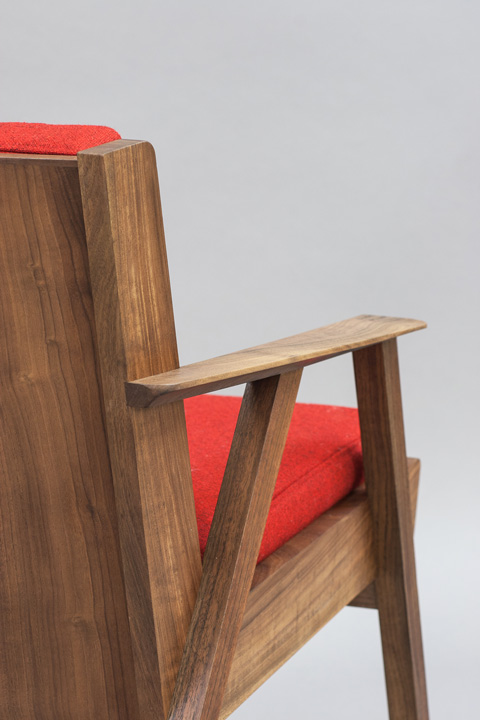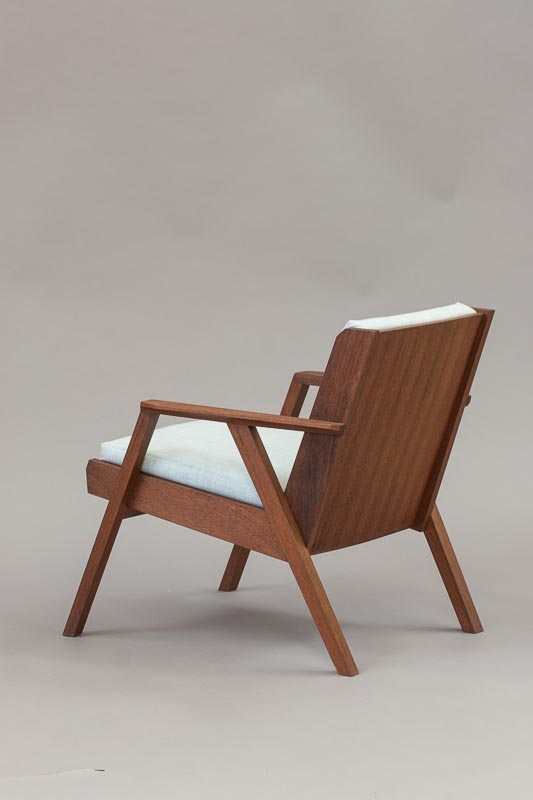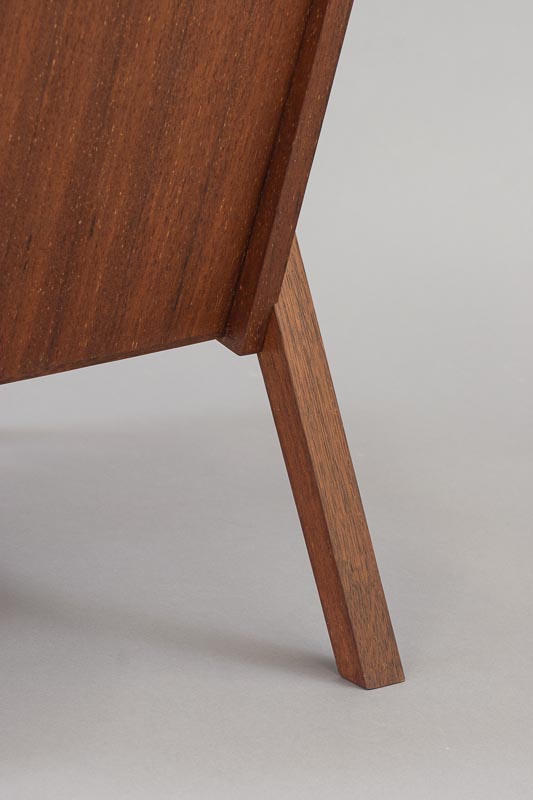
I gave up and bought the same amount of Kwila, another dark wood, but with very different characteristics. It is harder, it is heavier, it has orange and black tones, and is quite straight grained. I milled this wood up, built all the jigs, and right before I started making my final cuts, the Walnut was dry.


Fraternal
I designed an easy chair, full of woodworking details. Bridle joints, curved veneered panels, compound angles. A handmade craft piece, borrowing elements from mid-century modern designers, and traditional joinery techniques executed with hand tools. I bought the most beautiful local Walnut from a sawyer nearby, spending hours agonizing over which matching pieces to select.
When I began to mill it up - I found it was not properly dried. I built a DIY kiln, and stacked the wood around a series of fans and heaters.
I waited.
And waited.
I made a side project.
Still, the wood was wet.

So I built two chairs. I left the detailing until the end. The walnut received soft rounded corners, the Kwila received facets. It is curious working two woods at the sametime, through the same processes. You learn in a deep way about them. Comparing how one planes, how one takes glue, the relative weights and feelings. They took on different characteristics and so received different upholstery fabrics.

They are twins, but fraternal
